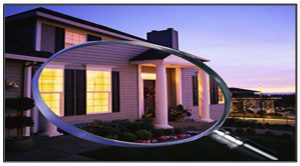
Home Buying
HOME BUYING – THE INSPECTION PROCESS
You’ve been looking at homes for what seems like forever, you finally found the right house and now it’s time to make an offer. What’s next? After you’ve come to an agreement between parties on price and terms, it’s time to peak behind the curtain, so to speak, to confirm the house is all you think it is. Are the systems in good working order, is it structurally sound? The California Residential Purchase Agreement contains provisions allowing various inspections of the property. The purpose of these inspections is to educate you as to the physical condition of the home you’re buying.
While these inspections do not provide guarantees of the condition of the property, they do provide valuable information to you as a Buyer. Your Purchase Contract may provide for a withdrawal from the contract if these reports are unsatisfactory to you, but inspections should not be considered an open door to renegotiate the purchase price.
THE HOME INSPECTION REPORT provides an overall assessment of the present condition of the property. The inspection covers items such as appliances, water heater, furnace, electrical service, plumbing, exterior siding, paint, flooring and other visible features of the property. This is a general inspection and will often call for additional inspections by specific trades, such as roof and furnace inspections. Who Pays? Typically, this inspection is paid for by the Buyer.
STRUCTURAL PEST CONTROL INSPECTION Often referred to as a “Termite Report” is conducted by a licensed inspector. In addition to actual termite damage, the Pest Report will indicate any type of wood destroying organisms that may present, including fungi (sometimes called “dry rot”), which generally results from excessive moisture.
Section I Conditions
Most Pest Reports classify conditions as Section I or Section II items. Section I conditions are those which are “active”, or currently causing damage to the property. Generally, Section I items need to be corrected before a lender will make a loan on a home.
Section II Conditions
Those which are not currently causing damage, but are likely to, if left unattended. A typical Section II item is a plumbing leak where moisture has not yet caused fungus decay.Who Pays? Your Purchase Contract will specify who is responsible for the cost of the inspection and who will make the corrections. This is a negotiable item.
PHYSICAL INSPECTION is usually done through a General Home Inspection. While Home Inspectors are not currently required to have a license in the State of CA, most are, or have been, General Contractors. The Inspection
and the resulting report provide an overall assessment of the present condition of the property. What is Inspected? The Home Inspection covers items such as exterior siding, paint, flooring, appliances, water heater, furnace, electrical service, plumbing, and other visible features of the property. This is a general inspection and will often call for additional inspections by specific trades, such as roof and furnace inspections.
If conditions warrant, the Home Inspector may recommend a Structural Engineer’s Report. Such a report would identify structural failures and detail recommended corrections. Who Pays? Typically, this inspection is paid for by the Buyer.
NATURAL HAZARD REPORT real estate seller and brokers are required to disclose if the property being sold lies within one or more state or locally mapped hazard areas. The law specifies that the six (6) required hazards be disclosed on a statutory form called the Natural Hazard Disclosure Statement (NHDS).
Required Risks Include:
A Special Flood Hazard Area
Dam Inundation
Very High Fire
Wildland fire
Earthquake Fault Zone
A Seismic hazard
In Addition, the following supplemental hazards are commonly reported as well:
Radon Gas exposure
Airport influence area
Megan’s Law disclosures
Military ordnance
GEOLOGICAL INSPECTION will educate you as to the soil conditions at the home you’re buying. This inspection is not typical in our area of the CA desert but could be done if there is a red flag that is causing concern. It would be performed by a Geotechnical Engineer and involves not only physically inspecting the property, but also researching past geological activity in the area. The primary purpose of a Geological Inspection is to determine the stability of the ground under and around the home. Who Pays? Typically the Buyer pays, but as with other inspections, this is negotiable according to the contract.
HOME WARRANTY a Home Protection Plans provide additional protection for certain systems and appliances in your new home and help both the Buyer and Seller. It protects the Seller from unforeseen failures such as a dishwasher that quits the day after closing and claims from the Buyer they didn’t disclose. They protect the Buyer from the same, the AC that breaks-down 6 months after move-in. For a service fee, the home warranty company will send a technician out to diagnose the problem and make necessary covered repairs. Who Pays for the Policy? This is a negotiated item; Buyers typically ask the Seller provide a coverage plan, they are not required to but it’s generally considered a good idea if they do.
There are many twists and turns throughout the home buying process that go beyond finding that perfect home. It takes the skill and knowledge of experienced professionals like Cathi and Ben Walter with Bennion Deville Homes to ensure you are covered and the details are handled properly. Home Buying in the Desert, see the best of Palm Desert, Indian Wells, Rancho Mirage, La Quinta, Palm Springs, Indio. For more information about the home buying process and how Cathi and Ben Walter can help, call 760.218.5752 or email them today Cathi(at)CathiWalter(dotted)com
